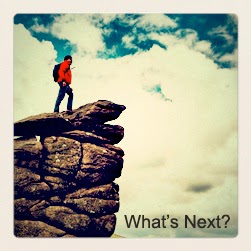Whether you know it as the Internet of things, enchanted items, or smart objects, the convergence of technology and marketing and customer experience will be a technological revolution. Call it smart.
It will be smart in terms of the technologies that are being announced and introduced daily — smart clothing, force touch, or innovative sports analysis tools — and smart in terms of the portable, multimodal (sight, sound, touch, readable), and interactive content that will be both functional and valuable to consumers. And it will finally drive home the idea that marketing and the customer experience is the same — from the very first touch point to the decision to upgrade or resupply.
Shaping Public Perception - The Next Step In Social Media
For a few hours on Wednesday, the next step in social media was very much on topic for the National Recreation and Park Association (NRPA) 2015 Annual Conference. It was one of the first opportunities I've had to share new insights into how marketers are going to adapt — and what they might learn from the psychological and sociological insights of Yuval Noah Harari and Donald Hoffman. Take a look.
While my published decks never contain all the content delivered during any educational session, one of the more theoretical premises I've been exploring to date suggests that if humans live with a dual reality (objective reality and conceptual reality) as Hoffman suggests and Harari alludes to as the fundamental skill set that allows us to cooperate with flexibility and in very large numbers, then it could be true that the marketing/branding/public relations (the conceptual reality of any product) of a product can account for as much as half the value (or perhaps more depending on the product).
I expect this will play out in the near future as new technologies, some of which are included in my deck, fuse communication efforts and customer experience. After all, value is rarely determined by the objective reality of an object. It is more often determined by a conceptual reality — the mythical made formula — that we collectively agree upon. Maybe. I'd love to know what you think.
A quick closing recap on the NRPA 2015 Conference.
Aside from this theoretical thrust of my presentation, it's interesting to note that parks and recreation departments across North America are still struggling with the practicality and tactical ability of social media (like most organizations). Most questions during the Q&A portion of my session dealt not with what is next, but rather what could be done right now to address time famine, message mitigation, brand management, and the pressures of constant change.
I'll be giving each of these topics space in the upcoming weeks, providing more depth and resources than what I could provide in a few seconds from the stage. I hope this short series really helps.
Special thanks to the 250 professionals (and live streaming viewers) who attended my session out of about 7,000-9,000 conference attendees, NRPA, and long-time colleague Dirk Richwine. I had an absolutely fantastic time speaking at the conference and look forward to our next opportunity.
It will be smart in terms of the technologies that are being announced and introduced daily — smart clothing, force touch, or innovative sports analysis tools — and smart in terms of the portable, multimodal (sight, sound, touch, readable), and interactive content that will be both functional and valuable to consumers. And it will finally drive home the idea that marketing and the customer experience is the same — from the very first touch point to the decision to upgrade or resupply.
Shaping Public Perception - The Next Step In Social Media
For a few hours on Wednesday, the next step in social media was very much on topic for the National Recreation and Park Association (NRPA) 2015 Annual Conference. It was one of the first opportunities I've had to share new insights into how marketers are going to adapt — and what they might learn from the psychological and sociological insights of Yuval Noah Harari and Donald Hoffman. Take a look.
While my published decks never contain all the content delivered during any educational session, one of the more theoretical premises I've been exploring to date suggests that if humans live with a dual reality (objective reality and conceptual reality) as Hoffman suggests and Harari alludes to as the fundamental skill set that allows us to cooperate with flexibility and in very large numbers, then it could be true that the marketing/branding/public relations (the conceptual reality of any product) of a product can account for as much as half the value (or perhaps more depending on the product).
I expect this will play out in the near future as new technologies, some of which are included in my deck, fuse communication efforts and customer experience. After all, value is rarely determined by the objective reality of an object. It is more often determined by a conceptual reality — the mythical made formula — that we collectively agree upon. Maybe. I'd love to know what you think.
A quick closing recap on the NRPA 2015 Conference.
Aside from this theoretical thrust of my presentation, it's interesting to note that parks and recreation departments across North America are still struggling with the practicality and tactical ability of social media (like most organizations). Most questions during the Q&A portion of my session dealt not with what is next, but rather what could be done right now to address time famine, message mitigation, brand management, and the pressures of constant change.
I'll be giving each of these topics space in the upcoming weeks, providing more depth and resources than what I could provide in a few seconds from the stage. I hope this short series really helps.
Special thanks to the 250 professionals (and live streaming viewers) who attended my session out of about 7,000-9,000 conference attendees, NRPA, and long-time colleague Dirk Richwine. I had an absolutely fantastic time speaking at the conference and look forward to our next opportunity.

















































